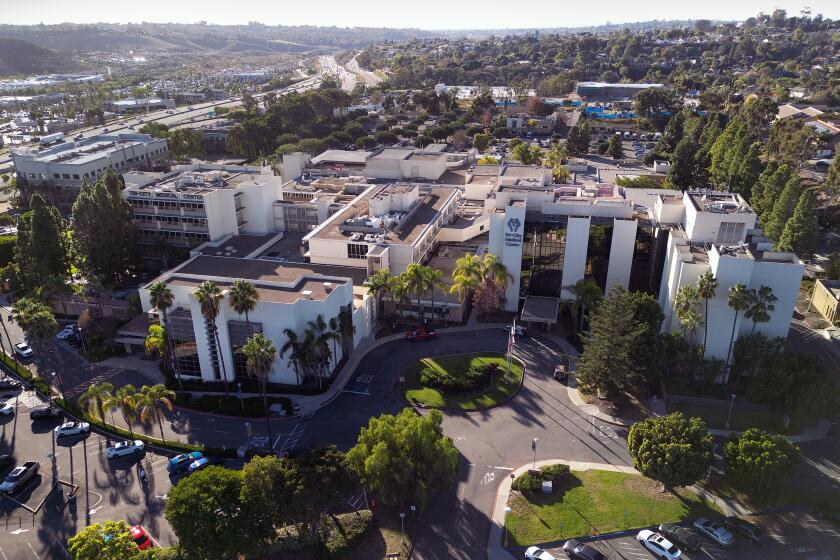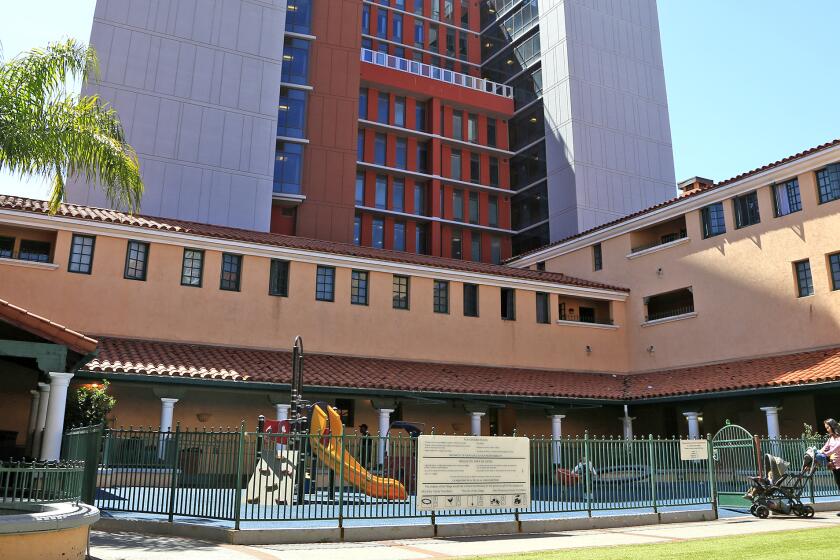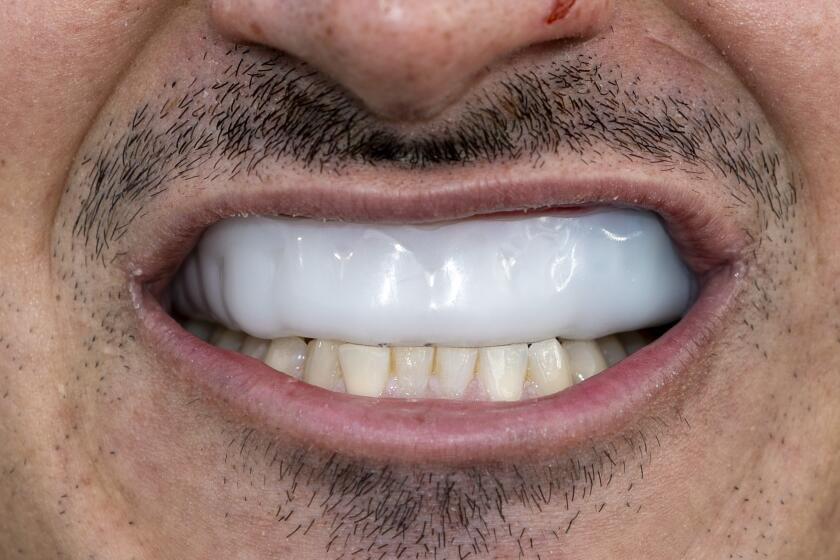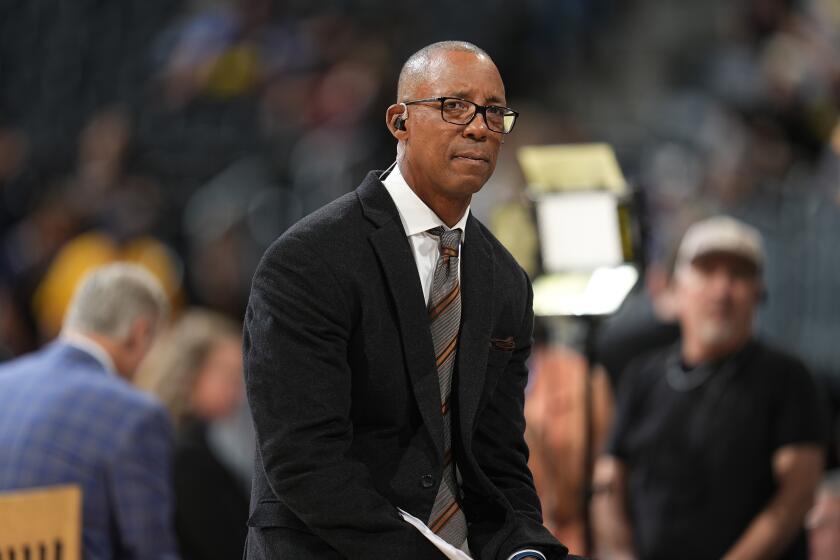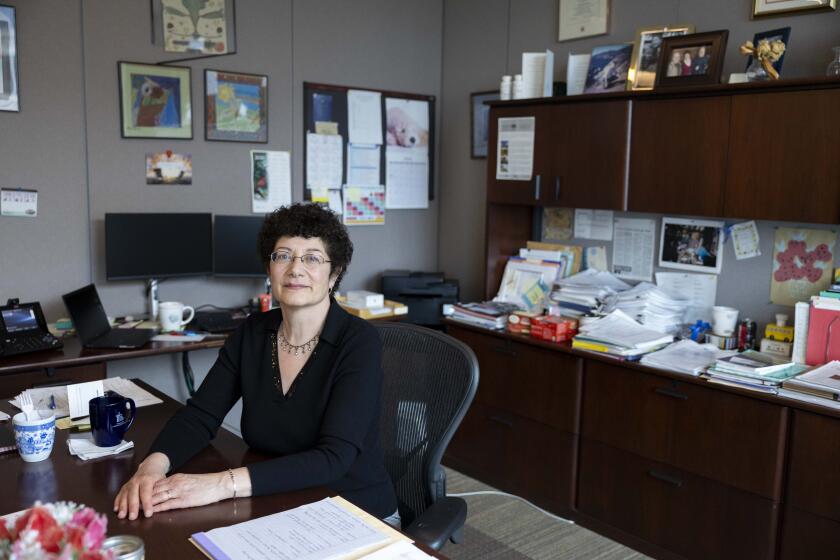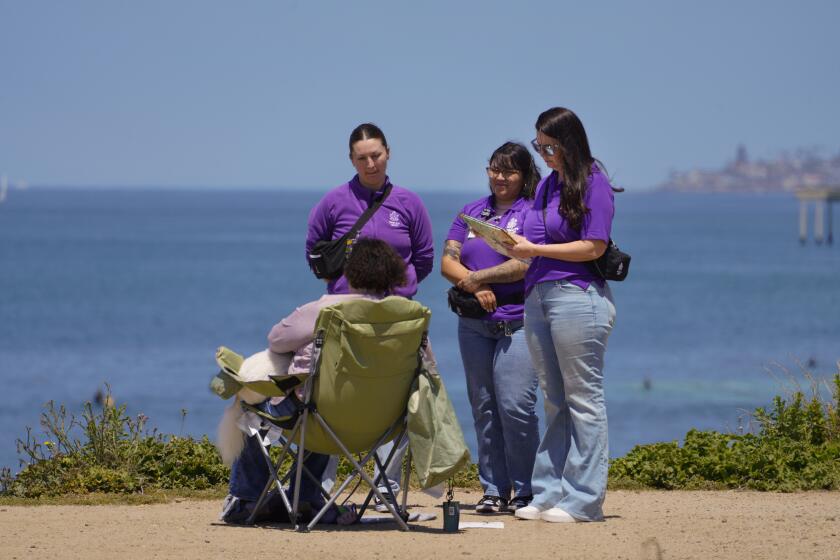New Rady clinic to fight chronic pain without opioids

New initiative will use 28-day immersive approach that relies on psychiatry and physical therapy rather than medications
A heel fracture suffered while running on the beach eventually left Jasper Neale with such chronic pain that even putting on a shirt was agony.
But an innovative program at a New Jersey hospital showed the 17-year-old how he could get his life back without the use of opioid painkillers, and now Rady Children’s Hospital is planning to follow the same route to help patients on the West Coast.
Billed as the first such effort in Southern California, the program, which launched Thursday morning, is a partnership between Rady and Children’s Specialized Hospital of New Jersey. It will use a 28-day course of psychology and physical therapy to help patients ages 11 to 21 manage the pain that sometimes remains and intensifies long after a traumatic injury heals.
Such was the case for Neale who, at age 14, found unbearable pain spreading through much of his body after his heel injury, which occurred while participating in workouts with his local Junior Lifeguards program.
It took much longer than it should have for the fracture to heal and, even after it did, the pain just would not stop. Multiple visits to specialists eventually returned a diagnosis: Complex Regional Pain Syndrome.
“CRPS, it’s where your nerves and brain say that there is extreme pain, but actually, there is nothing physically wrong with you,” Neale said.
An outpatient program at Rady couldn’t touch his pain nor could narcotic painkillers administered infrequently during flareups. Hours of daily therapy and homework that included scrubbing his skin with cleaning pads, were ineffective, keeping the Encinitas resident on the couch or in bed rather than in school or playing hockey, his favorite sport.
“I wasn’t able to wear clothes. I couldn’t shower. I couldn’t walk. If wind blew on me, I would be screaming in pain,” Neale said.
A video spotted online changed everything. It showed a girl of about the same age who suffered about the same symptoms but got them under control through a program that combined intense and painful stimulation with psychological techniques.
Two and a half weeks after learning of the program, Neale and his father, Richard Neale, an executive with Scripps Health, were eastbound on a red-eye flight.
“I was wearing loose shorts and no shirt. They put up a little screen, like a sheet, around me because I couldn’t wear anything,” Neale said. “I’m just sitting there trying not to scream my head off on the public plane.”
But that was nothing compared to what was in store upon arrival in New Jersey. Arriving in a wheelchair because it hurt too much to walk, he was immediately told to dress in compression tights and a long-sleeved shirt, a choice of clothing designed to stimulate every nerve ending, bathing the boy in agony.
The next day, it was into the facility’s pool to do laps.
“Although I was in lots of pain, screaming, crying, I still swam. You get to see that your body can do it, and I went from not being able to walk into the hospital on the first day to sprinting,” Neale said.
Working on the mental aspects of the pain he was feeling, recognizing the sensations for what they were and being around people who encouraged him to be active despite that deep hurt, showed him that he could shake off the stasis that had kept him home for so many months. It helped, he added, that the center had a group of other teens about his age that were taking the same excruciating trip.
Though many might expect kids in this situation to commiserate, it was just the opposite. One of the cardinal rules of the program is not to talk about pain.
“You don’t know what Johnny is going through; you don’t know what Sarah is going through,” Neale said. “But you know that everyone has something they’re working on. I think that having the support system with other kids was crucial to getting better.”
Though it might seem like voluntary torture, this technique is grounded in hard science.
Research has shown that talking about pain can act as a kind of trigger, conjuring the very devil you’re trying to avoid, said Linda Porter, director of the Office of Pain Policy at the National Institute of Neurological Disorders and Stroke in Washington.
Research also shows, she said, that in some people the nervous system ends up getting reconfigured -- made more hypersensitive -- by a painful event like the one that Neale experienced jogging on the beach.
But this adaptability is shown to work both ways.
Triggering chronic pain over and over again and mindfully recognizing the hurt for what it really is, a neurological glitch, can gradually dampen the overblown pain signals communicated by a hypersensitive nervous system. Techniques such as mindfulness, deep breathing, guided imagery and biofeedback are all employed as strategies to re-map pain signals.
“You’re changing those circuits back to where they should have been all along,” Porter said.
That was certainly the case for Neale. Sitting at the dinner table beside his mom, Lori Neale, Jasper made it clear that he’s not cured, but he’s in charge and has been since graduating from the program on Christmas Eve, 2014.
“When you leave, you’re not perfect, you still have pain ... but it doesn’t matter if you have pain because you learn how to take care of yourself completely,” Neale said. “It doesn’t matter if you’re in the worst pain of your life, you’re never going to be stopped from doing what you want to do.”
This journey, warned Lori Neale, an ICU nurse, is no easy road for parents. The immersive program forbids parents from tagging along, asking for trust that the painful road that their child must follow will be safe and beneficial in the long run even if it means significant short-term pain.
It’s necessary, she said, to give up some control, some of that protective instinct that’s built into every parent.
“It’s your child’s journey ... I think, once you realize that, then you can be comfortable saying these are the experts, let them do their work,’” Lori Neale said.
And that work clearly worked. Jasper, now standing six feet eight inches, is headed to the University of Toronto to play volleyball next year.
It’s this kind of result that should be possible in San Diego soon, said Dr. Anke Reineke, program director of Rady’s new Inpatient Chronic Pain Program, a renovated space inside the Rady’s sprawling Serra Mesa campus. The program will start with just two patients but will eventually ramp up to four and, if there is enough demand, may eventually hit six, she said.
Having traveled to New Jersey to see the program for herself, Reineke said it was clear
the approach worked. Kids were coming in on crutches or using wheelchairs but leaving on their own two feet.
“Seeing that kind of success with our own eyes made us feel very strongly about needing to do it here,” she said.
According to Children’s Specialized Hospital, a report on its patients’ outcomes indicated an average pain score drop from 6.6 to 3.9 on a 10 point scale for the 300 or so kids treated in the six years that the program has been up and running. Ability to exercise increased more than 100 percent.
Michael Dribbon, vice president of business development and chief innovation officer at Children’s Specialized, said that cross-country travel can be very hard on families, so collaborating with a West Coast partner made sense.
“As we’ve become more known, we’ve been serving more patients from outside our region. For us, this is a wonderful opportunity to bring this kind of care closer to patients who need it,” Dribbon said.
Though commercial health insurance companies can be convinced to cover a course of treatment for patients who have not responded to outpatient chronic pain therapy, Medi-Cal, the state’s health insurance for disadvantaged and disabled residents has not yet approved inpatient service, which costs between $50,000 and $70,000 per patient.
Rady sought to make it clear that its goal, as is the case with all of the treatments it offers, is to make sure no child is turned away due to inability to pay. The hospital’s foundation routinely uses donated funds to make sure that lack of cash is not a factor.
Get Essential San Diego, weekday mornings
Get top headlines from the Union-Tribune in your inbox weekday mornings, including top news, local, sports, business, entertainment and opinion.
You may occasionally receive promotional content from the San Diego Union-Tribune.



